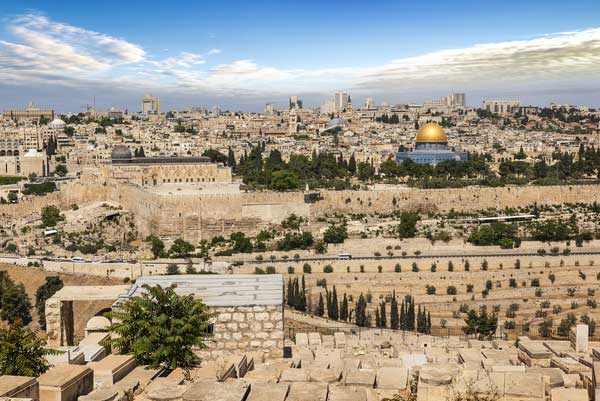The Israel-Palestine conflict, a protracted and complex issue, has garnered international attention for decades. To understand its roots and evolution, we need to delve deep into history. This article provides a comprehensive exploration of the historical background, key events, and factors that have shaped the ongoing conflict between Israel and Palestine.

Early History of the Conflict (17th Century BC)
In the 17th century BC, the region that now encompasses Israel, the West Bank, and the Gaza Strip was known as the “Land of Israel” or the “Promised Land.” This was the place where the patriarchs of the Jewish people—Abraham, Isaac, and Jacob—settled, laying the foundation for the Jewish connection to this land.
Rise and Fall of Jewish Monarchy (1000 BC)
King Saul established the Israelite monarchy, with King David and King Solomon playing pivotal roles. Jerusalem became the capital, but the land saw numerous conquests by various groups, diminishing the Jewish population.
Roman Conquest and the Name “Palestine” (1st Century AD)
The Roman Empire conquered the region, giving it the name “Palestine” to weaken the Jewish connection to the land. Christianity emerged as a dominant religion during this period.
The Arab Conquest and Islamic Influence (7th Century)
The 7th century saw the Arab conquest, spreading Islam and making Jerusalem a holy city for three monotheistic religions: Judaism, Christianity, and Islam.
European Crusades and Jewish Migration (16th Century to WWI)
During this era, European Jews began to migrate to the region due to the rise of Zionism, a movement aiming to establish a Jewish national state in their ancient homeland.
British Mandate and Tensions (20th Century)
Following World War I, the British Empire controlled the region known as the British Mandate for Palestine. Tensions between Jews and Arabs escalated.
Holocaust and Mass Jewish Migration
The Holocaust in Nazi Germany led to the migration of tens of thousands of Jews to Palestine, intensifying tensions with the Arab population.
UN Partition Plan (1947)
The United Nations proposed a plan to partition Palestine into two independent states: a Jewish state and an Arab state, with Jerusalem as an international zone. The plan was accepted by the Jews but rejected by the Arabs, leading to conflict.
The 1948 Arab-Israeli War
Right after Israel declared independence, a war broke out involving Arab nations. Israel gained control of significant territories, resulting in the displacement of hundreds of thousands of Palestinians.
The 1967 Six-Day War
In 1967, Israel won the Six-Day War, gaining control of the Golan Heights, the West Bank, East Jerusalem, and the Gaza Strip.
The Oslo Accords and Continuing Conflicts
The Oslo Accords led to the division of the West Bank into areas controlled by Palestinians and Israel. However, peace efforts faced challenges, leading to further conflicts.
Conflict with Hamas
Hamas, a militant group, gained power in Gaza, leading to conflicts with Israel and a devastating blockade.
Recent Developments
The relocation of the U.S. embassy to Jerusalem in 2018 and a series of hostile events in East Jerusalem in 2021 reignited the conflict.
Conclusion
The Israel-Palestine conflict is a deeply rooted and complex issue with a long history of tensions, disputes, and conflicts. Understanding its historical evolution is crucial for comprehending the ongoing challenges faced by both sides in the quest for lasting peace.
This article has provided a detailed historical account of the Israel-Palestine conflict, shedding light on its multifaceted nature. The dispute remains a sensitive and contentious topic, with no easy solutions in sight.
